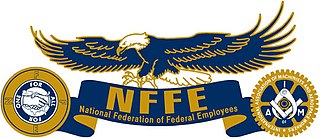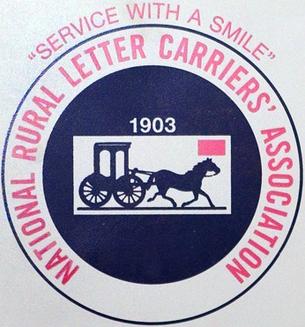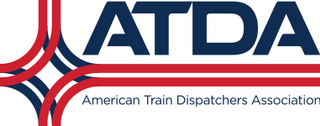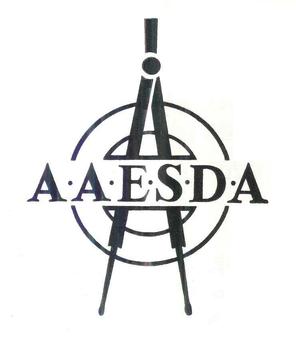
The United Transportation Union (UTU) was a broad-based, transportation labor union that represented about 70,000 active and retired railroad, bus, mass transit, and airline workers in the United States. The UTU was headquartered in Cleveland, Ohio. On August 11, 2014, it merged with the Sheet Metal Workers' International Association (SMWIA) to form the International Association of Sheet Metal, Air, Rail and Transportation Workers, known by the acronym SMART.

The Canadian Labour Congress, or CLC is a national trade union centre, the central labour body in Canada to which most Canadian labour unions are affiliated.

The International Alliance of Theatrical Stage Employees, Moving Picture Technicians, Artists and Allied Crafts of the United States, Its Territories and Canada, known as simply the International Alliance of Theatrical Stage Employees, is a North American labor union representing over 168,000 technicians, artisans, and craftspersons in the entertainment industry, including live theatre, motion picture and television production, broadcast and trade shows in the United States, its territories, and Canada. It was awarded the Tony Honors for Excellence in Theatre in 1993.

Transport Workers Union of America (TWU) is a United States labor union that was founded in 1934 by subway workers in New York City, then expanded to represent transit employees in other cities, primarily in the eastern U.S. This article discusses the parent union and its largest local, Local 100, which represents the transport workers of New York City. TWU is a member of the AFL–CIO.

The Australian Services Union is a trade union representing workers in a variety of industries.

The National Association of Government Employees (NAGE) is a registered labor union with the United States Department of Labor representing approximately 43,000 members in the United States of America. NAGE represents a variety of workers including state and federal government employees, municipal employees, registered nurses, EMS professionals including EMTs and paramedics, firefighters, law enforcement professionals including police and correctional officers and military air technicians. NAGE is an affiliate of the Service Employees International Union (SEIU).

The American Postal Workers Union (APWU) is a labor union in the United States. It represents over 200,000 employees and retirees of the United States Postal Service who belong to the Clerk, Maintenance, Motor Vehicle, and Support Services divisions. It also represents approximately 2,000 private-sector mail workers.
Union democracy refers to the governance of trade unions, as well as the protection of the rights and interests of individual members. Modern usage of the term has focused on the extent to which election procedures ensure that the executives of a union most accurately represent the interests of the members.

The Department for Professional Employees, AFL–CIO (DPE) is a semi-autonomous "trade" department of the AFL–CIO, and serves as an advocate for professional workers within the federation, and before legislative bodies, the press and the public.

The Civil Service Employees Association (CSEA) is a labor union in the state of New York that represents employees in state and local government, as well as school districts, child care, and the private sector. As of 2010, there were about 300,000 members in the union. CSEA is the largest constituent unit in American Federation of State, County and Municipal Employees.

The National Federation of Federal Employees (NFFE) is an American labor union which represents about 100,000 public employees in the federal government.

The National Rural Letter Carriers' Association (NRLCA) is an American labor union that represents the rural letter carriers of the United States Postal Service (USPS). The NRLCA negotiates all labor agreements for the rural carrier craft with the USPS, including salaries, and represents members of the rural carrier craft in the grievance procedure. The NRLCA's stated goal is to "improve the methods used by rural letter carriers, to benefit their conditions of labor with the United States Postal Service, and to promote a fraternal spirit among its members."
The Association of Western Pulp and Paper Workers (AWPPW) is a labor union in the western United States was affiliated with the United Brotherhood of Carpenters and Joiners of America. The Association of Western Pulp and Paper Workers disaffiliated from the Carpenters in 2023. It was established 60 years ago in September 1964, when West Coast rank-and-file members of the International Brotherhood of Pulp, Sulphite, and Paper Mill Workers became dissatisfied with the conduct of wage negotiations by international vice-presidents and those of another international union, the United Papermakers and Paperworkers, with whom a Uniform Labor Agreement had been negotiated. The dissatisfaction was a result of the international Vice Presidents announcing that they were taking over the United Labor Association bargaining session. They established a new union, the Association of Western Pulp and Paper Mill Workers. Litigation followed, a NLRB election was conducted in October 1964, and the Western organization was certified as the Uniform Labor Agreement bargaining agent. In 1994, it affiliated with the United Brotherhood of Carpenters and Joiners of America.
The Construction, Maintenance and Allied Workers Canada (CMAW) is a construction trade union headquartered in Vancouver. The purpose of the CMAW is to negotiate pay and work conditions on behalf of its 4,000 members in British Columbia (BC) and Alberta. Union members include carpenters, shipbuilders, scaffolders, pipefitters, millwrights, lathers, cabinetmakers, display technicians, industrial workers and school board employees.

The American Train Dispatchers Association or Train Dispatchers is an American trade union representing railroad workers. The Train Dispatchers belong to the AFL–CIO as one of the organization's smallest members.

The Association of Draughting Supervisory and Technical Employees (ADSTE), originally known as the Association of Architects, Engineers, Surveyors and Draughtsmen of Australia (AAESDA), was an Australian trade union which existed between 1915 and 1991. It represented white collar and technical-grade employees in both the private sector and the public service.
The International Association of Sheet Metal, Air, Rail, and Transportation Workers (SMART) is a North American labor union headquartered in Washington, DC, which was chartered by the AFL–CIO in 2013. The product of a merger between the Sheet Metal Workers’ International Association (SMWIA) and the United Transportation Union (UTU), SMART represents over 210,000 sheet metal workers, service technicians, bus operators, engineers, conductors, sign workers, welders, and production employees, among others, throughout the United States, Puerto Rico, and Canada. The Transportation Division represents employees on Class I railroad, Amtrak, and regional and short line railroads; bus and mass transit employees on some 45 transit systems; and airline pilots, flight attendants, dispatchers and other airport personnel. The Division's 500 local unions organize conductors, brakemen, switch men, ground service personnel, locomotive engineers, hostlers, and railroad yard masters, as well as bus drivers and mechanics.
A police union is a trade union for police officers. Police unions formed later than most other occupations, reflecting both a conservative tendency and relatively superior working conditions. The first police unions formed in the United States. Shortly after World War I, the rising cost of living, wage reductions, concerns over amount of rest and growing dissatisfaction among rank and file police officers led to a number of police strikes from 1918–1923 and the formation of police unions globally.
Police unions in the United States include a large number and patchwork variety of organizations. Of those unions which conduct labor negotiations on behalf of its police members, 80% are independent and have no affiliation to any larger organized labor groups. There were a reported 800,000 sworn officers in the United States as of 2017, and an estimated 75–80% of them belonged to a union.













